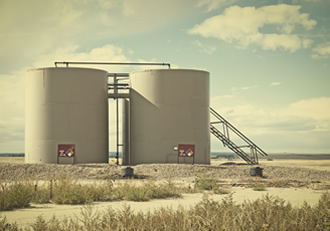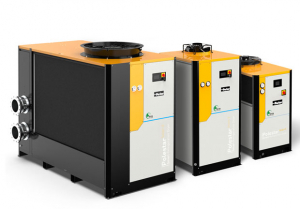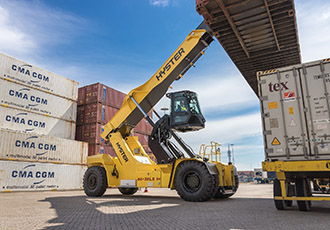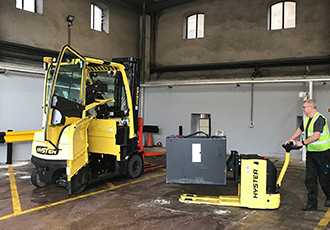Soil-side corrosion on aboveground storage tank solved

Soil-side corrosion during operation is such a common occurrence for the storage tanks used for product storage in industrial facilities, especially when installed in severe environments. Soil-side corrosion is perceived to be a principal cause of storage tank failure and imposes a major environmental and operational challenge worldwide.
With thousands of Aboveground Storage Tanks (ASTs) installed, the MENA (Middle East & North Africa) region is not an exception. Ingress of chlorides and other corrosive species from the native soil and groundwater through the tank pad, along with the presence of bacteria such as SRB, are believed to be the main causes for soil-side corrosion.
Airborne chlorides and moisture can seep into the under-tank environment through the chime area, causing annular plates to corrode.
Current treatment methods and limitations
Several techniques have been adopted to mitigate soil-side corrosion of AST floors, such as bituminous/oily sand, Cathodic Protection (CP) systems, and coatings. However, total effectiveness of these techniques, standalone or combined, has been questionable in providing the required protection.
The bituminous layer hardens and cracks as it ages, creating a corrosive environment that traps moisture and corrosive species between the underside of the tank floor and construction pad. It has also been shown that this layer when combined with CP shields the cathodic current and renders the CP system ineffective, at least partially.
The presence of inevitable air gaps below the AST prevents the tank floor from being in direct contact with the sand (electrolyte), consequently blocking CP current at such locations and preventing uniform CP distribution on the underside surface of the tank bottom.

CorroLogic VpCI in action
There is a growing industrial awareness about the advantage of introducing amine carboxylate Vapor phase Corrosion Inhibitors (VpCIs) into the tank pad, which makes Cortec’s CorroLogic a possible answer to the aforementioned challenges. The ability of CorroLogic VpCIs to protect areas that cannot be reached by traditional Cathodic Protection makes it an suitable treatment to be used in conjunction with CP or by itself when CP is deficient or absent.
Utilising the power of Cortec’s VpCIs, CorroLogic is able to vaporise and disperse through open areas below an AST. When the VpCIs reach a metal surface, they adsorb and form a protective molecular barrier to guard against corrosion, providing an added dimension of protection to under-tank areas that cannot be reached by CP.
CorroLogic can be added to an AST in several different forms, enabling application during construction of new tanks or while existing tanks are in-service or out-of-service. During construction, CorroLogic pouches can be placed on an AST’s high density polyethylene (HDPE) liner and left to emit VpCIs below the tank surface.
If an AST is already in service and needs protection, a CorroLogic Slurry is injected beneath the tank floor through the existing monitoring or leakage detection pipes or through injection pipes post-installed through the concrete ring beam. When a tank is out of service for T&I, CorroLogic Powder is fogged through the tank floor into the under-tank area and allowed to diffuse.
Successful research and implementation
Since the successful implementation of CorroLogic in the Middle East in 2011 on a 107-meter crude oil tank at a major oil and gas facility in the Arabian Peninsula, Cortec Middle East has been researching and successfully applying CorroLogic AST solutions in the various petrochemical, water-power, and oil and gas sectors across the GCC countries.
Cortec Middle East continues to do research to evaluate the effective use of CorroLogic in conjunction with CP. Khalil Abed presented some of this research in a paper he shared at the NACE 2016 Conference and Expo earlier this year.
It was concluded that CorroLogic VpCI alone has the ability to reduce the corrosion rate significantly, which makes it a viable solution to protect against soil-side corrosion, especially for tanks with no CP system or with a deficient one. The paper also showed that combining CorroLogic VpCI with Impressed Current Cathodic Protection (ICCP) showed a synergistic effect and helped reduce the corrosion rate further, keeping it well below 0.5mpy.
Similar articles
More from Cortec
- Layup insights from major auto build-ahead programmes 14th May 2020
- Cortec to present latest corrosion protection technology 1st November 2017
- Additives combat corrosive effects of salts and fluids 9th October 2017
- Corrosion protection for Post-Tensioned Structures 13th May 2017




.jpg)







Write a comment
No comments